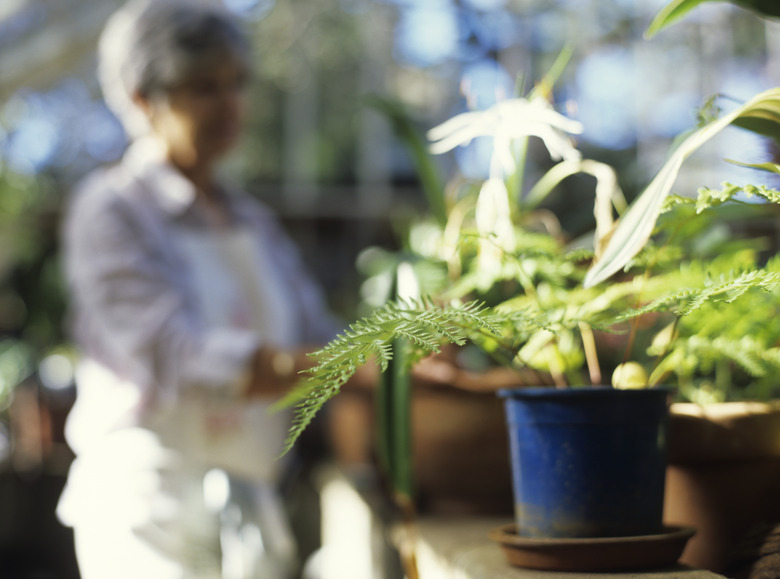Brown, Dry Tips On Philodendron Leaves
Beautiful, long-lived and easy to grow, philodendrons (Philodendron spp.) thrive on some neglect and most problems occur because of too much attention in the forms of over-watering and over-fertilizing. While they're usually grown as houseplants, philodendrons grow outdoors in U.S. Department of Agriculture plant hardiness zones 10 through 12, depending on the species. Brown, dry leaf tips usually indicate a minor problem, such as too much light or not enough moisture.
Light
Step 1
Philodendrons need some light, but too much bright light can cause brown, dry tips or brown patches on the leaves. The best spot is one that gets bright, filtered light, such as that coming from a window with a northern or eastern exposure. If you suspect bright light is the culprit, remove the browned leaves and move the plant to a spot that gets slightly less light.
- Beautiful, long-lived and easy to grow, philodendrons (Philodendron spp.)
- Philodendrons need some light, but too much bright light can cause brown, dry tips or brown patches on the leaves.
Watering
Step 1
A lack of moisture may cause a philodendron to develop brown leaf tips. Philodendrons need consistently moist, but not soggy, soil to thrive. Potted plants tend to dry out more quickly than those planted in ground, so check your philodendron every two to three days and water as soon as the soil feels slightly dry. Use a well-draining potting mix and don't overdo the water. Too much water is as bad as too little, and can cause wilting and yellowing leaves.
Tip Curl
Step 1
If the leaves curl downward before turning brown, the problem might be tip curl, which is caused by too much fertilizer. Water the plant thoroughly to leach out excess fertilizer. Going forward, feed your philodendron with 1/2 teaspoon granular fertilizer diluted in 1 quart or water, every three to four weeks during the summer. Check the package instructions for dilution rates as they vary among brands. During the winter, fertilize philodendron every six to eight weeks.
- A lack of moisture may cause a philodendron to develop brown leaf tips.
- Potted plants tend to dry out more quickly than those planted in ground, so check your philodendron every two to three days and water as soon as the soil feels slightly dry.
Pests
Step 1
If your philodendron is infested with insects or other pests, you'll probably notice other symptoms, such as wilting, yellowing or stippled leaves or a sticky substance on the leaves. Spider mites, aphids and scale insects are common houseplant pests that injure plants by sucking the sap from the leaves. They usually don't cause brown leaf tips, but if you notice additional symptoms, suspect pests. Keeping plants healthy minimizes the damage insects cause, but you can dispatch them by rinsing the leaves with water or coating the leaves thoroughly with a ready-to-use insecticidal soap spray. Coat both the tops and bottoms of the leaves.
